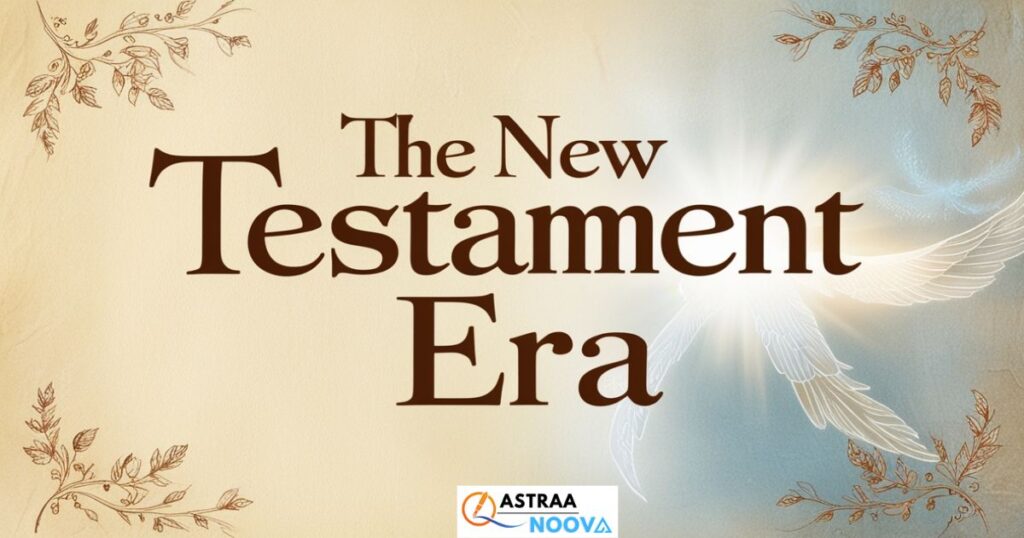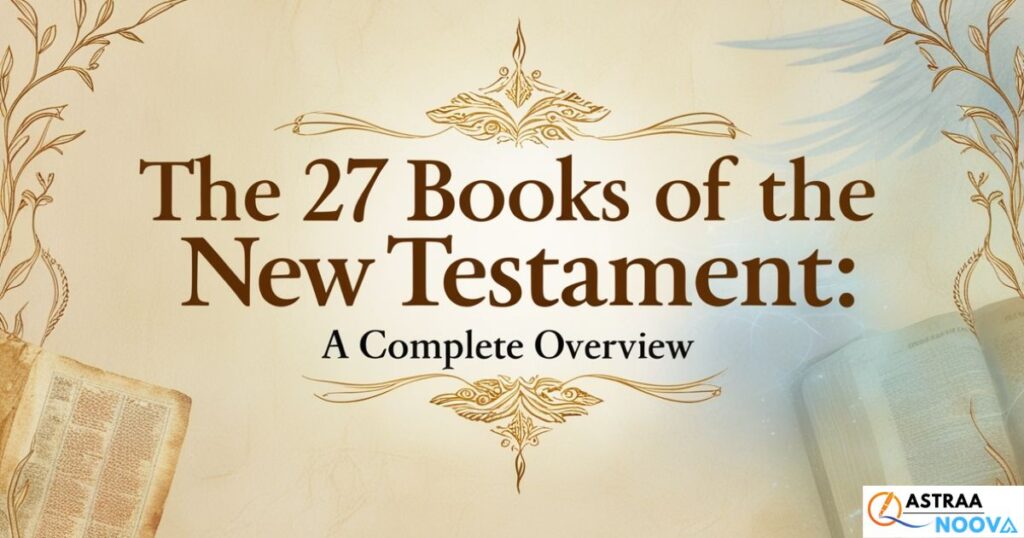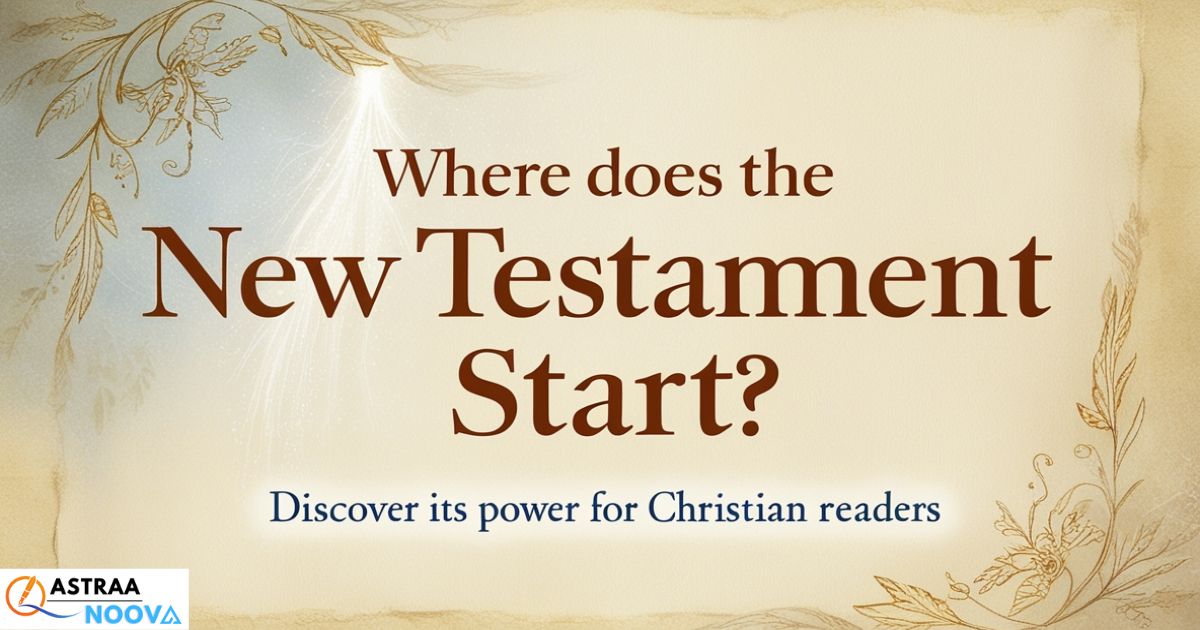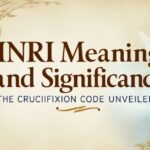Ever wondered where exactly the New Testament starts and what makes its beginning so significant? As a Christian reader, understanding the starting point of the New Testament isn’t just about finding the right page it’s about grasping the foundation of our faith.
The New Testament begins with the Gospel of Matthew, opening with a powerful declaration of Jesus Christ’s lineage. This carefully crafted genealogy connects Jesus to both King David and Abraham, establishing His rightful claim as the promised Messiah.
Think about it like opening the first chapter of an incredible story that’s been building up for centuries. The Book of Matthew bridges the gap between the old promises and their fulfillment in Jesus Christ.
Key Features of Matthew’s Gospel
The Gospel of Matthew stands out for its unique approach to presenting Jesus Christ. Written with a Jewish audience in mind, this gospel carefully weaves together ancient prophecies and their fulfillment in Jesus’s life and ministry.
When you dive into Matthew’s account, you’ll notice how he emphasizes Jesus as the promised King of the Jews. From the visit of the Magi seeking the newborn king to the royal genealogy, every detail points to Christ’s divine authority.
Matthew doesn’t just tell us what happened he shows us why it matters. Through carefully chosen stories and teachings, he demonstrates how Jesus fulfilled over 60 Old Testament prophecies, making a compelling case for His role as the Messiah.
The New Testament Era: Where Does It Start?

The dawn of the New Testament era marks a revolutionary shift in how people relate to God. This new chapter begins with the earthly ministry of Jesus Christ, but its full impact unfolds after His resurrection and ascension.
Picture this moment as the greatest plot twist in human history. The old system of law and sacrifice gives way to a New Covenant built on grace and faith. As Paul would later write, this changed everything about how we approach God.
The transition wasn’t just about turning a page it was about turning hearts. The early Christian church emerged from this transformative period with a radical new understanding of God’s plan for humanity.
Composition and Significance
The New Testament comprises 27 books, each contributing uniquely to our understanding of Christian doctrine. From the four Gospels to the Book of Revelation, these texts form a cohesive narrative of salvation.
Paul’s letters to various churches provide practical guidance for living out the faith, while the Book of Acts chronicles the explosive growth of the early Christian church. Each writing serves a specific purpose in building up believers.
These texts weren’t just historical documents they became the foundation for Christian ethics and church life. Their impact continues to shape how millions approach their faith and understand God’s plan.
Structure and Content
The New Testament follows a logical progression, starting with Jesus’s life in the Gospels and moving through the establishment of the church. This structure helps readers grasp the full scope of God’s redemptive plan.
Beginning with Matthew 1:1, we encounter the carefully documented lineage of Jesus Christ. This genealogy isn’t just a list of names it’s a testament to God’s faithfulness across generations.
The content builds systematically from historical narrative to practical teaching, culminating in the prophetic visions of Revelation. Each section reinforces the central message of salvation through faith.
Opening Chapters
The opening chapters of the New Testament set the stage for everything that follows. Matthew’s account begins with Christ’s genealogy, while Luke provides detailed narratives about the circumstances of Jesus’s birth.
These initial chapters establish key themes that echo throughout the New Testament: divine intervention, fulfillment of prophecy, and God’s plan for redemption. They show how Jesus’s arrival was both anticipated and extraordinary.
The careful attention to detail in these opening narratives helps readers understand the historical and prophetic significance of Christ’s coming. Every element points to the divine purpose behind these events.
Read Also >> Where Was Jesus Crucified?
The 27 Books of the New Testament: A Complete Overview

Understanding the complete collection of New Testament books helps us grasp its full scope. The 27 books begin with the four Gospels and end with Revelation, each serving a unique purpose in Christian teaching.
The books are traditionally grouped into categories: Historical books (the Gospels and Acts), Paul’s letters (Romans through Philemon), General Epistles (Hebrews through Jude), and Revelation. This organization helps readers understand their different roles.
Modern scholars have also arranged these books chronologically, with Paul’s earliest letters actually predating the written Gospels. This timeline provides valuable context for understanding the development of early Christian thought.
Theological Significance
The theological depth of the New Testament begins with profound declarations about Jesus Christ’s identity. Consider John 1:1-5, which presents Jesus as the eternal Word, establishing His divine nature and role in creation.
The introduction of the New Covenant through Christ represents a fundamental shift in how humanity relates to God. This new relationship, prophesied in Jeremiah 31:31-34, emphasizes internal transformation over external observance.
The concept of salvation through faith emerges as a central theme, particularly in writings of Paul. This marks a significant departure from the Old Covenant’s emphasis on law-keeping, introducing the transformative power of grace.
Key Themes at the start of the new testament
The opening of the New Testament establishes several foundational themes that shape Christian understanding. The promise of redemption through Christ stands as the cornerstone, offering hope to all who believe.
Kingdom of God teachings feature prominently in these early passages. Jesus’s parables and declarations about God’s reign present a radical new vision of divine authority and human response.
Moral and ethical principles flow naturally from these theological foundations. The Sermon on the Mount particularly demonstrates how Christian ethics emerge from a transformed understanding of God’s character.
Transition from Old to New Testament
The shift from the Old Testament to the New Testament represents more than a simple page turn. After the final words of Malachi, God’s people waited centuries for the fulfillment of ancient promises.
This transition period set the stage for Jesus’s ministry. The political, cultural, and religious climate of first-century Jerusalem created the perfect context for God’s redemptive plan to unfold.
Luke 24:44 captures this beautifully, showing how Jesus himself explained the connection between ancient prophecies and their fulfillment in His life and ministry.
Bridging the Testament Gap
The transition between the Old Testament and New Testament spans several centuries of history. This period, sometimes called the intertestamental period, sets the stage for Jesus’s ministry.
During this gap, significant historical events and cultural changes occurred that help us understand the world Jesus entered. The rise of Roman power, development of synagogue worship, and spread of Greek culture all influenced the New Testament era.
These historical developments help explain why the New Testament begins as it does, with Matthew’s careful connection between old promises and new fulfillment.
The Early Church and Beyond
The birth of the early Christian church in Jerusalem marked the beginning of a worldwide movement. Starting from Pentecost, the message of salvation spread rapidly through the ancient world.
Under the leadership of apostles like Peter and Paul, the church expanded from Jerusalem to Rome, crossing cultural and geographical boundaries. Their journeys, recorded in Acts, show the dynamic growth of early Christianity.
The writings of the apostles, particularly Paul’s letters, provided crucial guidance for new believers. These texts helped establish Christian doctrine and practice across diverse communities.
Navigating Different Bible Versions
While the content remains consistent, different Bible versions organize the New Testament slightly differently. The King James Bible, for instance, maintains the traditional ordering that begins with Matthew and ends with Revelation.
Modern translations like NIV and ESV follow this same basic structure, making it easy for readers to navigate between versions. The chapter and verse numbering system remains consistent across translations.
Some study Bibles include helpful features like chronological arrangements or thematic groupings, but they all maintain Matthew as the opening book of the New Testament.
Historical and Spiritual Significance
The historical impact of the New Testament’s beginning extends far beyond its original context. From Jerusalem to the ends of the earth, its message has transformed countless lives across centuries.
Archaeological discoveries continue to confirm the historical reliability of New Testament accounts. Places mentioned like Judea and Samaria have been extensively documented through historical research.
The spiritual significance of these texts remains as powerful today as when they were first written. The themes of grace, redemption, and salvation continue to resonate with modern readers.
Read Also >> Physical Signs of the Holy Spirit: Feel His Powerful Presence
Understanding Modern Applications
Today’s readers can find remarkable relevance in the New Testament’s opening passages. The challenges faced by early believers often parallel our contemporary struggles.
The teachings about grace and faith offer fresh perspective for modern spiritual seekers. These ancient writings provide timeless wisdom for navigating life’s complexities.
The emphasis on community and spiritual growth remains particularly relevant. Early church practices can inform how we build meaningful faith communities today.
Conclusion
The beginning of the New Testament marks a pivotal moment in human history, where ancient promises find their fulfillment in Jesus Christ. From Matthew’s careful genealogy to the explosive growth of the early Christian church, these texts provide a foundation for understanding God’s redemptive plan.
The themes established in these opening passages faith, grace, and salvation continue to transform lives today. Whether you’re a new believer or a seasoned scholar, the start of the New Testament offers fresh insights and timeless truths for your spiritual journey.
As we’ve explored together, the transition from old to new represents more than just a historical shift it marks the beginning of a new way of relating to God through Jesus Christ. This understanding enriches our reading of Scripture and deepens our faith practice today.
This comprehensive guide reminds us that the New Testament’s beginning isn’t just about where the text starts it’s about where our journey with God can begin anew, guided by the timeless wisdom and transformative power of these sacred writings.
FAQ’s about New Testament in Bible
Where does the New Testament in the Bible start?
The New Testament begins with the Gospel of Matthew, specifically opening with Matthew 1:1 which presents Jesus Christ’s genealogy. This strategic placement connects the promises of the Old Testament with their fulfillment in Christ.
Which chapter starts the New Testament?
Matthew Chapter 1 marks the beginning of the New Testament, introducing the genealogy of Jesus Christ through David and Abraham. This chapter establishes Jesus’s legal claim to the Davidic throne and His role as the promised Messiah.
What is the first chapter of the New Testament?
The first chapter is Matthew 1, which begins with “The book of the genealogy of Jesus Christ, the son of David, the son of Abraham.” This chapter includes both Christ’s genealogy and the narrative of His birth.
Where is new beginning in the Bible?
The new beginning in Scripture is marked by the start of the New Testament with Matthew’s Gospel, representing the transition from the old covenant to the New Covenant through Jesus Christ. This shift fundamentally changes how humanity relates to God.
What is the difference between the Old Testament and the New Testament?
The Old Testament focuses on God’s covenant with Israel through the Law of Moses, while the New Testament reveals the New Covenant through Jesus Christ. The New Testament emphasizes salvation through faith and grace rather than law-keeping, fulfilling the prophecies written in the Old Testament.

Multilingual faith educator exploring connections between language, spirituality, and dream symbolism.


















